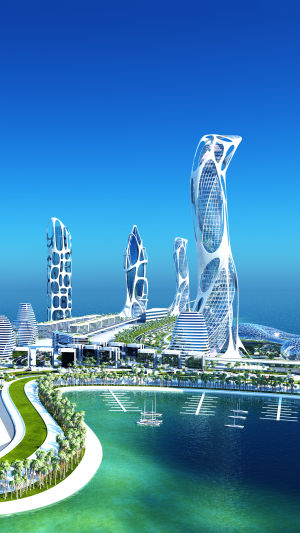Architecture is an ever-evolving field that constantly adapts to technological advancements, societal changes, and environmental concerns.
As we move into the future, several trends are emerging that will shape the way we design and construct buildings. From sustainable practices to smart cities, here are some of the key future trends in architecture.
1. Sustainability: With the increasing awareness of climate change and the need for sustainable practices, architecture is embracing eco-friendly design principles. Architects are incorporating renewable energy sources such as solar panels and wind turbines into building designs.
They also focus on energy-efficient systems, use materials with low carbon footprints, and implement green building certifications like LEED (Leadership in Energy and Environmental Design).
2. Biophilic Design: Humans have an inherent connection to nature, and biophilic design aims to bring nature into the built environment. Future architecture will incorporate elements such as green roofs, living walls, and ample natural light to create a healthier and more productive space. Biophilic design improves air quality, reduces stress, and enhances overall well-being.
3. Smart Buildings and Cities: The rise of the Internet of Things (IoT) has paved the way for smart buildings and cities. In the future, buildings will be equipped with sensors and automation systems that optimize energy usage, improve security, and enhance occupant comfort.
Smart cities will utilize interconnected infrastructure to manage resources efficiently, monitor environmental conditions, and improve the quality of life for residents.
4. Adaptive Reuse: As cities grow and resources become scarcer, adaptive reuse will become increasingly important. Rather than demolishing old structures, architects will repurpose existing buildings to meet new needs. This trend not only preserves historical and cultural heritage but also reduces waste and promotes sustainable development.
5. Modular Construction: Modular construction is gaining popularity to reduce construction time and costs. This method involves constructing building components off-site and assembling them on-site. Modular construction allows for greater precision, less waste, and faster project completion.
It also offers flexibility, as buildings can be easily expanded or reconfigured in response to changing needs.
6. Virtual and Augmented Reality: Virtual and augmented reality technologies are revolutionizing the way architects design and visualize spaces. These tools allow clients and designers to experience buildings in a virtual environment before construction begins.
VR and AR enable immersive walkthroughs, real-time design modifications, and accurate scale representations, leading to better-informed design decisions and improved communication between stakeholders.
7. Zero Net Energy Buildings: Zero Net Energy (ZNE) buildings produce as much energy as they consume over a year. With advancements in renewable energy technologies and energy-efficient building practices, ZNE buildings will become more prevalent in the future.
These buildings will rely on solar panels, geothermal systems, and advanced insulation to achieve net-zero energy consumption, reducing reliance on fossil fuels and mitigating climate change.
Future trends in architecture are driven by the need for sustainability, technological advancements, and resilience. Architects are embracing eco-friendly practices, integrating smart technologies, repurposing existing structures, and utilizing virtual reality tools.
By prioritizing these trends, the architecture of the future will be more environmentally conscious, efficient, and adaptable to the changing needs of society.





